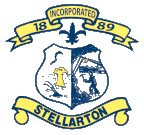News Room
Lead & Copper Monitoring Program Needs Volunteers
- Published: June 28 2024 00:00

The Town of Stellarton is seeking volunteers for the lead and copper monitoring program.
Why is the Town of Stellarton sampling drinking water?
Health Canada has developed the "Guidance on Controlling Corrosion in Drinking Water Distribution Systems." In addition, the "Guidelines for Canadian Drinking Water Quality" has set a new limit of 0.005 milligrams per liter for lead and 2 milligrams per liter for copper. This requires all municipalities to regularly sample and test private taps within their respective homes for lead. These requirements place an emphasis on the testing of private plumbing, which has a possibility of containing lead. Older homes may have been built with lead service lines or they may contain lead-based solder, as this was preciously acceptable for private plumbing.
How is the water tested?
- The Homeowner who has volunteered will be contacted via phone, and the Town's Water Treatment Staff will visit the home and provide a 1-liter plastic sample bottle.
- The Homeowner will proceed to the kitchen faucet and fill the bottle with cold water and place the cover on the sample bottle.
- The Homeowner can then return the sample to the Water Treatment Staff who will write down the sample details on the label.
- The samples will be sent away for analysis at a laboratory in Halifax, as such, the results are typically availabile within 30 days. The results will be reported by the Town's Water Treatment Staff. Should a value above 0,005 milligrams per liter of lead, or 2 milligrams per liter of copper be recorded for a residence, then the Town's Water Treatment Staff will advise the Homeowner immediately, and additional testing consisting of four 1-liter samples will be required (these samples will be taken after there has been no water used in the residence for greater than 6 hours).
When will sampling take place?
The sampling typically occurs over the summer months.
What if lead is found in samples taken from my home?
If lead is found a value above 0.005 milligrams per liter of lead, or 2 milligrams per liter of copper for a residence/business, you can expect the following:
- The Town's Water Treatment Staff will advise the Homeowner immediately.
- Additional testing consisting of four 1-liter samples will be required. These samples will be taken after there has been no water used in the residence for greater than 6 hours.
If you do have lead in your water, what can you do?
If you are concerned about lead in drinking water or suspect your plumbing may contain lead, you can take action to limit your exposure to lead in drinking water:
- Flush pipes by running the water until it is cold (about a minute) after water has been sitting in pipes for several hours (e.g. first thing in the morning, after work, etc.);
- Use a drinking water treatment device certified to meet the National Sanitation Foundation (NSF) standards 53 or 58 (reverse osmosis units) for the removal of lead and copper. While a faucet mounted unit is preferred, pitcher style filters are also acceptable;
- Inspect and clean faucet aerators or screens monthly. If there is debris, inspect and clean more frequently to remove particles that may contain lead;
- Replace brass faucets and valves with those certified to have a low lead content; and
- The only way to completely reduce lead exposure is to remove the source of lead.
Can everyone participate?
The Town is required to sample 20 residential households. If more than 20 households volunteer, staff will reduce the list to the 20 that best represent all areas of Town and the age of the residence.
To volunteer for this program, please contact the Town Office at (902) 752-2114 between the hours of 8:30am and 4:30pm.
Homeowner's Guide to Identifying Private Service Lateral Material
Step 1: Locate the water meter or incoming water line in your home. Typically, this will be in the basement or in a utility closet that contains your hot water tank if you don't have a basement.
Step 2: Use an object like a butter knife and tap the pipe close to where it enters the house through the wall or floor. There is a distinct sound difference between metal and plastic. If you are unaware of these sound differences, compare by tapping the butter knife on something in your home that you know is plastic and metal.
Step 3: If the pipe is metal, use a key or coin to scratch the pipe close to where it enters the house through the wall or floor.
- What colour is the pipe underneath?
- Metallic and orange like a penny? It is a copper service lateral.
- Metallic and yellow/gold like a loonie? It may be a brass service lateral. Brass is uncommon, but brass can contain lead.
- If the pipe is grey, continue to step 4.
Step 4: Hold a magnet to your service line. Does the magnet stick?
- NO - It is a lead service lateral.
- YES - It is a steel service lateral.
- Remember to wash your hands when you are done.
